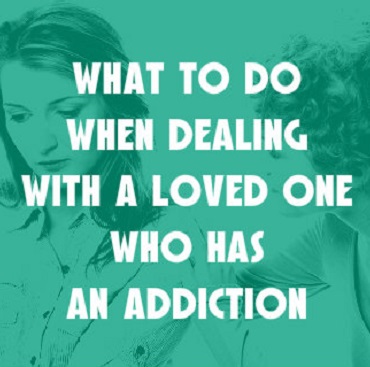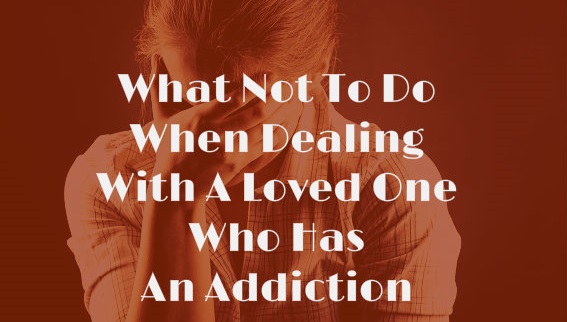Continued From – How To Handle A Loved One With An Addiction – Part 1
No one is born with a set of instructions on how to handle an addict. My perspective on what tends to work and what doesn’t, or perhaps better said, what can be helpful and what definitely is not, is born of my own experience as an addict. When I was ready to recover, and when I wanted it because it was what I knew I needed, it mattered little what people had said or hadn’t said. Nonetheless, looking back, I can see that some approaches were helpful while others resulted only in resentments I had to later work through in recovery.
What Is Helpful When Dealing With An Addict
By labeling these ideas “helpful,” I do not mean to imply that they will achieve the desired result of getting the addict to get clean. It is rather to say that these approaches are less likely to do harm and are more likely to help maintain a relationship of trust between you and the addict. In the end, the addict has to choose recovery because she wants it—not because you do.
Give Space
Addicts are already isolators, so it may appear that all they want is more and more space and time to be alone and practice their addiction. By giving space, I mean to say, emotional space. Keep the addict near and continue to engage to the degree that she is able or willing. But refrain from making every conversation or occasion together about the disease. The addict already feels the all-pervasiveness of it. You don’t need to keep bringing it up or checking in.
Share The Struggle
Many families of addicts make the mistake of keeping the issue a secret. This failure to reach out is generally based in the fear of the stigma attached to addiction and mental illness. But you need support and help in what may be a very long battle. Start by speaking with a pastor at your church or with trusted family friends. You do not need to be ashamed, this is no one’s fault. Addiction is painfully isolating not only for the addict but for the family who has to live and deal with the secret problem as well. Humble yourself to bring others in for support.
Get Help For You
Addiction touches and traumatizes the lives of everyone in its midst. Family members and even friends can benefit from counseling or a series of Al-Anon meetings. Become educated about the disease and learn what you can and cannot realistically expect from an addict. Learn to recognize patterns of manipulation and become aware of your own potential tendencies for co-dependency and enabling. Find out how to set proper boundaries around a person with addiction and get the support you need in sticking to them. Programs like Al-Anon are miraculous in helping those who live with addicts to understand what their role is in dealing with an addict.
While I was blessed with recovery from my anorexia, I watched another young girl lose her life to it at the age of 24. If the addict you love does not find recovery, you must not blame yourself. You cannot save someone who will not be saved. By the same token, you cannot, even by poorly chosen words and unthinking behavior, stop someone from seeking recovery and getting well if that is what they have decided to do.
There is no easy way to approach, handle or talk to a loved one struggling with addiction.
If you have an addict in your life, expect it to be difficult, awkward and uncomfortable. There will be good days and bad days, there will be small successes followed by perhaps greater setbacks. You will be pushed to your emotional limit and you will be forced to face your own inability to change a person you love. You will be wholly incapable of making him see that what you want is what’s best for him.
Helping Those Dealing With Addicts
Dealing with addicts isn’t intuitive. We don’t simply discern how to get through to them or how to interact with them based on common sense or reason. While respecting addicts as people, it will help the non-addicts in their midst to understand that reason, good sense, morality and self-preservation are no longer part of a framework within which they operate or a common ground upon which to meet.
But that doesn’t mean we write addicts off as crazy and give up hope. Having been an addict myself, I had a lot of people around me trying to help or cure or fix me in different ways. From the vantage point of recovery, I can now look back and comment on what was helpful and what wasn’t. Even a decade later, I remember how the people around me treated me when I was drowning in the despair of my addiction. While nothing you say will make or break an addict’s chances of recovering, there are ways of communicating and interacting that are harmful and pain-inducing, and there are better, more helpful ways of trying to relate to a person who is indeed quite sick.
What Not To Do When Dealing With An Addict
Guilt Trips
Yes, the addict is making everyone’s life difficult and causing a lot of unnecessary pain and suffering. She breaks plans, she fails to keep her commitments, she is unreliable and unpredictable. And guess what: she already knows it. Asking things like, “Do you realize what you are doing to your mother?” or, “Don’t you understand how you are hurting us?” are not helpful. The addict, though selfish in the extreme, is not oblivious to the pain, difficulty and chaos she is bringing into the lives of those around her. But she is not able to stop it. A guilt trip presupposes that the person being guilted is acting deliberately or out of malice. It assumes that he or she has some control over the offending behavior. An addict does not.
Bargaining
You’ll do anything, make any promise, as long as the addict will agree to stop the addiction and get help. But the addict is powerless to take you up on that offer. The addiction is boss. As appealing as your offer might be, it simply isn’t possible. Addicts are known for high-stakes gambling. They gamble their families, their jobs and anything good they can claim. They know what they have to lose and they do it anyway. They don’t do it because they don’t care; they do it because the illness is in fact that powerful and enslaving.
Endless Pleading And Cajoling
This is also known as nagging and it is never helpful or effective. It’s not that the addict doesn’t care, it’s that she cannot stop what she is doing on the basis of your wishes—even if she wanted to. The disease is a lot stronger than that. It’s a lot stronger than she is. In the end, the addict may tell you what you want to hear, but then go back to business as usual. She knows you think there is a problem. You don’t have to continue to restate it.
Implying Fault Or Agency
Loved ones must burn into their minds that both substance and process addictions are not choices that the addict is making. As a result, blaming addicts or implying that they are practicing their addiction simply because they are selfish and unloving is not only incorrect, but cruel. Understand that the addict is in the grip of something much bigger than him or herself. Addiction is an illness like diabetes or cancer. You may hope that addicts will take the appropriate steps to manage the condition, but it is unhelpful to imply that they do what they do on purpose.
Ignoring The Issue
If there is nothing that can be said to make an addict want to seek help, and if the nagging and the pleading are ineffective, does that mean it’s better to say nothing at all? Is it better to ignore the issue, make the best of it or hope it all just goes away? No. Something does indeed need to be said and maybe even done, but the ways in which you speak and act hold the difference between showing genuine love and support, and being a nuisance and a nag.
While your words and expressions of concern may not effect immediate change in the addict’s life, while they may not leave your chat promising to check into treatment, the addict will benefit from the knowledge that you cared enough to say something out of concern and love. Don’t pretend there isn’t a problem.
Continued In – How to Handle A Loved One With An Addiction – Part 2
Teens that begin using alcohol and other substances during adolescence are engaging in what experts call early initiation, which is a concern because individuals that begin using substances recreationally in high school may go on to develop a dependence by the time they reach adulthood.
There are deterrents in place to prevent teens from using alcohol and cigarettes; including age limits and heavy consequences if a business is caught selling to minors or an individual is caught purchasing for them.
A new study conducted by the Centre for Addiction and Mental Health (CAMH) finds that the majority of teens in Ontario, Canada, obtain these products from friends or family.
The researchers surveyed teens in grades 7 to 12. Among the students that smoked cigarettes, 58 percent report obtaining their last cigarette from a friend or family member. 19 percent of teen smokers said that they bought the cigarettes from a corner store, bar, gas station or grocery store.
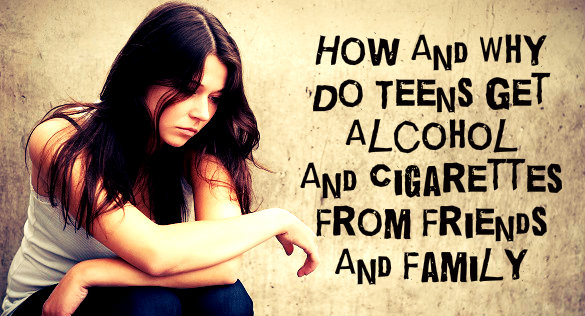
Gender, Age And Neighborhood Differences In Obtaining Cigarettes, Alcohol
Males were more likely to report that they had obtained cigarettes from a store compared with females. Seventy-three percent of the females involved in the survey said that their last cigarette came from a friend or family member.
When students were asked about consuming alcohol, 39 percent of those that drank said that their last drink was given to them, while 28 percent asked someone else to purchase the alcohol for them. Four percent of students said that they purchased the alcohol themselves from a liquor store.
The students from an urban area were more likely than those in rural settings to indicate that someone had provided them with alcohol (40 vs. 35 percent). Among those in rural areas, 33 percent of the students said that they gave someone else money to purchase alcohol for them, while 27 percent of students in urban settings asked someone to buy alcohol for them.
The report also found that there were trends according to the student’s age. Older teens were more likely than their younger counterparts to admit that they obtained alcohol by paying someone to purchase it for them. This occurred at a rate of 32 percent for older teens versus two percent for younger teens. Younger teens were more likely to indicate that someone gave them alcohol at a rate of 53 percent versus 37 percent for older teens.
Parents And Corner Stores Involvement And Responsibility
Principal investigator for the study, Dr. Robert Mann, is also the Senior Scientist at CAMH. Mann explained that teens are often obtaining alcohol and cigarettes from the very people that should be protecting them from exposure to such substances.
The findings also indicated that teens were able to easily access cigarettes from corner stores that don’t sell alcohol. The findings suggest that the availability of alcohol at corner stores could result in increasing rates of teens purchasing alcohol.
The information for the study was derived from the Ontario Student Drug Use and Health Survey by CAMH. The survey was administered to 9,288 students in the 7 through 12 grades at 40 public and Catholic schools in Ontario. The survey has been given to students every two years since 1977.
Parents concerned about their children obtaining alcohol and cigarettes during adolescence can openly discuss these matters with their teens. Studies have shown that by introducing the topic multiple times into conversation teens are much more able to make informed decisions.
Another way to prevent teens from using substances is to talk with other family members about the teens’ substance use. In some cases, the teen is obtaining cigarettes or alcohol from an older sibling.
Have you ever noticed that no matter how old you are, no matter how far you’ve come in your career or how much life experience you’ve got under your belt, when your family gets together, you fall right back into old familiar patterns of relating to each other? Therapists would call these patterns of behavior “roles” – almost like the roles actors play. Every family does this to some extent, but in families that have been affected by addiction, the roles might seem like they are cast in concrete. Rigid and unchanging over decades, it seems like each child is born into their role and that’s it, forever.
Some important things to remember about these roles:
- They are not conscious choices. No parent decides, “I’m going to be a Chief Enabler” in my family. Kids don’t choose to become a Mascot or a Hero.
- The roles themselves aren’t “good” or “bad.” When growth and change is frowned upon, that is what’s bad for families. The stuckness and inability to grow beyond a role is what makes roles problematic in a family affected by addiction.
- These roles carry over into other areas of life, making intimate relationships problematic, or careers/professional relationships difficult to navigate.
- Treatment is helpful for becoming aware of these roles and how they are impacting your behavior. This is an area where therapy can be really useful and effective, and where insight can lead to making positive changes.
In prior articles, we’ve looked at the Chief Enabler and the Family Hero—two roles that are somewhat balanced in terms of having much that is positive about them and much that can be harmful or detrimental about them. These two roles are similar in that both Heroes and Enablers “over-function”—they tend to pick up the slack emotionally, financially, and in terms of physical chores. The drinker or substance abusers tend to not get to things (from dishes to bills to baseball games) because their focus is on using. The Hero and the Enabler both work hard—sometimes hard enough to make themselves physically ill—to maintain the appearance of a well-functioning family.
The Scapegoat
The Scapegoat is a very different type of role. This is the child who constantly gets in trouble, and constantly attracts negative attention. As a young child, this is the one who may be diagnosed with attention-deficit hyperactivity disorder (ADHD) or have “behavior problems” at school. Maybe a bully, or maybe just the class clown, this is the child who seems incapable of following rules or letting things be easy. For the Chief Enabler, this child is a thorn in his or her side.
Often as a teenager, the Scapegoat begins using drugs or alcohol. These children can have significant conflict with others in the family, and sibling issues between the Hero and the Scapegoat are common.
 These children are sometimes described as the “lightning rods” for the family, since they seem to attract negative consequences. They are the typical acting-out child: they act out all the anger, frustration, rage and fear that all of the family members may feel. When a parent drinks or uses drugs, that parent’s behavior can be unpredictable and frightening for children. Rules may change based upon whether the parent is drunk, hung over, or seeking a drink. Conversations that take place while the parent is under the influence might not be remembered the next day. Permission granted can be taken back, and moods can flip on a dime. The inconsistencies of the using parent’s behavior, and the covering up or “making nice” that the enabler does can also be confusing at best, and infuriating at worst. The Hero just works harder at pretending everything is fine and that the family is fine, despite all these emotions. The Scapegoat is the family member who insists the family get attention—he is the one who screams “something is wrong” and does so by being “wrong.”
These children are sometimes described as the “lightning rods” for the family, since they seem to attract negative consequences. They are the typical acting-out child: they act out all the anger, frustration, rage and fear that all of the family members may feel. When a parent drinks or uses drugs, that parent’s behavior can be unpredictable and frightening for children. Rules may change based upon whether the parent is drunk, hung over, or seeking a drink. Conversations that take place while the parent is under the influence might not be remembered the next day. Permission granted can be taken back, and moods can flip on a dime. The inconsistencies of the using parent’s behavior, and the covering up or “making nice” that the enabler does can also be confusing at best, and infuriating at worst. The Hero just works harder at pretending everything is fine and that the family is fine, despite all these emotions. The Scapegoat is the family member who insists the family get attention—he is the one who screams “something is wrong” and does so by being “wrong.”
When looked at this way, the Scapegoat is easier to understand. On the surface, the Scapegoats just seem like such screw-ups; it can be hard to feel compassion for them. They appear to be committed to making a mess of their lives, and they often appear to be uncaring about the impact their behavior has on others. However, looking at the bigger picture of the whole family, it is easier to understand those who take on this role as not only a scapegoat but also a sacrificial lamb: they sacrifice their own life, health, and happiness to get the problems in the family noticed. The messes they make are the “cry for help” that may get the real problem in the family noticed.
The big risk with the Scapegoat is that by the time he or she reaches adulthood, he or she may well have developed an addiction or legal problems, or have continued “fallout” from the messes that were made during the teenage years to such a significant degree that they have severe trouble getting started in adult life. The Scapegoat needs help more urgently and at a younger age than the Hero; not only is the risk of substance abuse higher for children in this role—the risk of suicide is higher as well.
Whenever groups of people get together—at work, in families, at the firehouse, on a sports team, or among the club members—individuals take on roles as part of interacting with each other. Someone might be the “class clown” in the room, always quick to make a joke or lighten up a situation; someone else might take on the role of “mom” and do the caretaking for the group. Roles are normal, inevitable, and in healthy situations, they help make for smooth functioning (or an easy target for gentle teasing!).
In families affected by addiction, or any family in which one or both of the parents are unable to fulfill their role as parent, there is a tendency for all family members to take on rigid and surprisingly predictable roles. In any group of children of addicts or alcoholics, ask about the roles in their families growing up and you will hear some very similar reports over and over again. In a dysfunctional family, the key difference regarding roles is that they are rigid: once you’re pegged as a Mascot or Hero, for example, you’re stuck. Behave in a way that is not in line with that role, and your entire family pressures you to get back in line. Placing a value on change, flexibility and authenticity (think of being authentic as embodying and expressing your individuality instead your role behaviors) are not typically part of dysfunctional family dynamics.
Several experts on addiction and family roles have named and described these typical roles. The names are a little different depending upon which author you’re reading: family systems therapist Virginia Satir used the terms placater, adjuster, distracter, blamer, and computer to label the different communication styles and roles family members take on. Claudia Black and Sharon Wegscheider Cruse built upon Satir’s work on communication styles and family roles, and used the names scapegoat, family mascot, hero/responsible one, and lost child to describe the different roles.
In an earlier article we discussed the role of the Chief Enabler, typically a role taken on by the addict or alcoholic’s partner. Here we’ll take a closer look at The Family Hero. This role could be taken on by any child in the family although birth order does seem to play a role with family heroes most commonly being the oldest child. The Family Hero is the child who lives the denial, devoting his or her life to proving that they are fine despite the “elephant in the living room.”
Characteristics of The Family Hero
The Family Hero is the perfect child. He or she takes on being perfect for the family as a way of proving that the addict or alcoholic’s drinking isn’t a problem. Look: I can get good grades, play a sport, and totally have my life together despite Mom or Dad’s drinking. The Family Hero crafts life to contradict the assumption by others outside the family that the drinking or drugging will affect the kids.
The children who take on the family hero role often do extremely well at whatever they take on, and are successful in the eyes of the world. They often become professionals; doctors or other healing professions are common. They often manage money well, and have very high standards for themselves and their own families.
They are often intolerant of their own emotions, and this is their Achilles heel. They need to be perfect, and they need their lives to be perfect to “undo” the imperfections they had to tolerate from early on. The problem is life is not perfect and uncontrollable things happen: accidents, being victimized, relationship problems, health issues…life tosses obstacles in our path constantly and the need to handle each one “perfectly” is a pressure family heroes place upon themselves.
Risks and Pitfalls
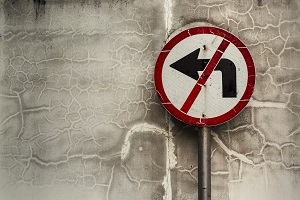 This places the Family Hero at high risk for developing substance abuse problems themselves. Finding a way to cope with the tremendous internal pressures isn’t easy and all those unmet needs from childhood can crash into the adult pressures to “have it all together.” Substance abuse isn’t the only risk: eating disorders are also common among women who have filled this role in a dysfunctional family. The efforts to control the uncontrollable can easily be channeled into controlling eating and weight, and focusing on something tangible: appearance and/or weight can make the overwhelming pressures of making “everything” perfect feel more manageable. Children who have taken on the Family Hero role also seem prone to depression and anxiety, as they try so hard to make everything better than it was during their own childhood but inevitably feel as if they have failed, either due to their own dissatisfactions and old wounds, or due to the challenges and “bumps in the road” that life hands them.
This places the Family Hero at high risk for developing substance abuse problems themselves. Finding a way to cope with the tremendous internal pressures isn’t easy and all those unmet needs from childhood can crash into the adult pressures to “have it all together.” Substance abuse isn’t the only risk: eating disorders are also common among women who have filled this role in a dysfunctional family. The efforts to control the uncontrollable can easily be channeled into controlling eating and weight, and focusing on something tangible: appearance and/or weight can make the overwhelming pressures of making “everything” perfect feel more manageable. Children who have taken on the Family Hero role also seem prone to depression and anxiety, as they try so hard to make everything better than it was during their own childhood but inevitably feel as if they have failed, either due to their own dissatisfactions and old wounds, or due to the challenges and “bumps in the road” that life hands them.
How to Help
Often as an adult, the Family Hero feels like he or she needs to do everything, take on every responsibility, and be in charge of all of it. While this is understandable, since so much didn’t get done in a responsible or timely way during childhood, this inability to delegate or share responsibility, and the need to be in control of everything all the time is draining and destructive. You can see how a Family Hero could grow up to become a Chief Enabler as the roles in adulthood are rather similar.
Psychotherapy aimed at helping shed the Family Hero role can be effective. Learning to tolerate imperfection and the notion of “good enough” (as opposed to perfect) can be life changing for these people.
Part 3: Dysfunctional Family Roles: The Scapegoat Acts Out in Cry for Help
For parents struggling with addictions, trying to manage normal day-to-day family issues such as sibling rivalry and school stresses and pressures is compounded by a special complication, something specific to families dealing with addictions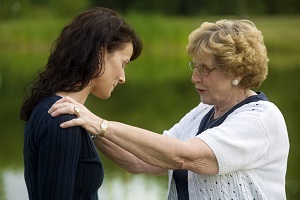 (or families in which one or both parents are unable to function in their parenting role on a regular basis). As hard as most parents try to protect their children from the negative impact of their drinking or drug use, the impact is experienced by all family members. One way this plays out is through rigid and dysfunctional family roles.
(or families in which one or both parents are unable to function in their parenting role on a regular basis). As hard as most parents try to protect their children from the negative impact of their drinking or drug use, the impact is experienced by all family members. One way this plays out is through rigid and dysfunctional family roles.
Before we continue, let me say something about family dysfunction. As a treatment provider for people with addictions and their families for many years, I saw how devastating addictions can be to lives young and old. What’s important to remember here is that despite having an addiction that often leads to very negative behaviors—including violence, abuse, neglect—and despite being labeled “dysfunctional” (we’ll get to that in a moment), these are families that also are bonded by love and loyalty. These are parents who love their children and want the best for them and children who love and defend their parents despite having suffered due to their behaviors.
Taking apart the word “dysfunctional,” the prefix ‘dys’ refers to pain. Dyspepsia is a stomachache; dysmenorrhea is the technical term for painful periods. Dysfunction in the family context means that a family is functioning in pain. Meals do get made, children attend school, play sports, parents work, but the context in which all this happens is emotionally painful. Sometimes my clients would get defensive about the term “dysfunctional,” telling me that it felt like blame to say their family “ didn’t function.” So I make a point of agreeing: there is functioning and often children from families impacted by addiction function very well in some ways; but it would also be unfair and inaccurate to fail to acknowledge the pain that occurs too.
Family Roles
In all families, affected by addiction or not, family members take on roles. Sometimes Mom takes on the role of the discipliner, sometimes Mom is the “banker” for the family. Dad might have been the “sports guy” or the social planner. Imagine a particular behavior—for example, climbing a tree or catching a frog—and most people would then be able to predict which family member would be most likely to engage in that behavior and which would be least likely. The kid who was “outdoorsy” or a girl who fit the “tomboy” role would be first in line. In healthy families, the roles arise from internal personality characteristics and are flexible—as a child grows, develops, and changes, so do the roles.
In families affected by addiction, certain specific roles seem to evolve. These roles are more rigid and predictable, and have been described by a few well-known writers in the field of addiction and family roles. The names change from writer to writer, but the basic roles are similar.
The Second in Command:
In families where addiction is impacting the dynamics, the alcoholics or addicts often have someone on “their side,” someone who takes on the task of keeping the family functioning by keeping the person who is using as functional as possible. This person calls in sick for the drinker, or makes excuses at “Meet the Teachers Night.” They find themselves lying to the kids, the neighbors, their friends and ultimately themselves. Family systems therapists refer to this role as the Chief Enabler, or Codependent. Sometimes in the literature on addiction and alcoholism, people refer to the codependent person as “addicted to the addict.” These people seem to need the relationship more than they seem to need their own health. Let’s take a closer look at this role.
This role is a tough one: the job includes handling all the chores and responsibilities the drinker is not doing. The Chief Enabler just takes over, managing, organizing, acting as the Executive Director, administrative assistant, communications director, and database manager, over-functioning in all these roles (the school principal called? Your boss called? A run-in with police? “I’ll handle it” is the typical Chief Enabler response). He or she is the glue that holds the family together, usually working long hours; often at a job earning money and then at home taking care of all the details that can get left unmanaged when an addict uses.
The purpose of this role is to prevent the family (including the drinker) from experiencing the negative consequences of addiction. Of course this is impossible, which makes this person feel hopeless and frustrated, but also very important, since there are small successes and triumphs (such as a little league game attended by the addict or alcoholic, or open house at the school) along the way. The Chief Enabler feels “stuck” and often very angry about their stuckness because they know how important they are to the “success” of the family (in fact, it often feels like “if I don’t do it, it won’t get done”).
People in this role often receive much praise and support from the community. People outside the family often admire the Chief Enabler, which is one of the few positives about being in this role—often others outside the family recognize how critical the Chief Enablers actions are to the health or even survival of the family—so you hear comments like, “Mary really holds that family together.” The other side of this coin is that they also feel alone and furious at being stuck with being the responsible one who has to take care of everything. The fact that these people often do an excellent job, partly because they’ve had so much practice, is their blessing and their curse and is the catch 22 they experience as “stuckness.”
Read Part 2: Dysfunctional Family Roles: The Family Hero Tries to Hide the Obvious Here.


